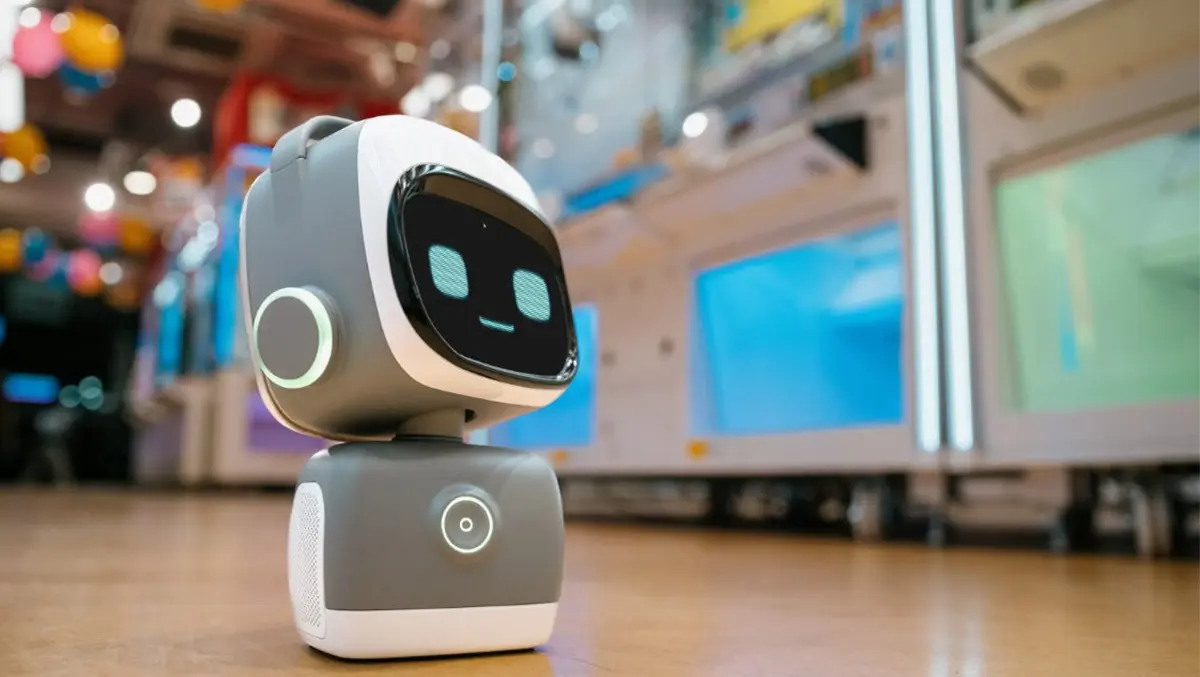
How Norby the language robot is more than just a companion
Norby, an AI-powered language companion, highlights the exciting evolution of language learning through interactive and adaptive technology.
Adrian Mullan, Founder and CEO of Norby, led the demonstration at Dell Technologies World in Las Vegas, highlighting the robot's ability to engage in natural conversations across multiple languages and contexts. Norby supports more than 30 languages, with new additions and updates rolled out through over-the-air software updates.
Mullan said his motivation for developing Norby was rooted in his own experiences. "A few years ago, while helping my daughter with her homework, I noticed something troubling - she was bored and struggling to stay focused. Conventional learning materials simply couldn't hold her attention. That realization sparked the idea for Norby," he explained.
Norby is designed to be more than just another digital assistant or educational tool. "Humans have an innate desire to connect, even with the things we create. We give objects human-like traits, attribute emotions to our pets, and name our digital assistants - it's part of who we are," Mullan said.
"I didn't want another device that demanded my attention. I wanted a companion - something that helps me stay focused, in flow, and truly engaged. A companion that adapts to my personality, interests, and goals."
During the demonstration, Mullan illustrated Norby's capabilities by asking it to greet the audience in various languages and accents, as well as to generate stories on demand.
"Hey, Norby, can you do me a favour? Can you say hello to the journalists in the room?" Mullan asked.
Norby responded with, "Hello everyone. I'd be happy to extend a greeting to the journalists present. I'm sure, Adrian, you'd like me to make a good impression, so I'll make sure to be as charismatic as possible on various projects, including sound checks and helping with your work on interactive voice companions."
The device's multilingual proficiency is underpinned by a flexible architecture that allows Norby to select the best available models for different languages.
Mullan explained, "We plug into a bunch of different providers for the speech recognition as well as the large language model inference, and effectively what we do is we built an architecture where we can send the responses to the best model at the time."
"So an example would be OpenAI, Google, Anthropic, all the big US providers will be great when it comes to English, Latin based languages and so on, but they'll tend to struggle with Asian character sets, so Chinese, Japanese, Korean and so on. In that case, we can spin it off to the DeepSeek, or to Qwen , or whoever, the best provider is," he said.
The hardware is intentionally designed to be approachable and engaging, resembling a character rather than a device, and is equipped with high-performance processing, a full-colour HD touchscreen, high-quality speakers, and expressive RGB LED lighting. Norby's software supports a variety of large language models and is continually enhanced through regular updates.
Norby's applications go beyond language learning. "Our problem at the moment is we have more requests from people than we can sort of deal with. I would say language and speech therapy is a really big one on the consumer side. The next area that we're moving into is much more the agentic productivity side," Mullan said.
He described using Norby at home to manage daily tasks: "My Norby unit at home actually does things. I checks my email. It'll summarise my emails. I can ask Norby, okay, what's important for the day. And then what it'll do is, it's connected to my inbox, but also to my LinkedIn, to my social feeds, to my calendar. It'll take all of that stuff, create a summarisation."
Addressing the broader technology landscape, Mullan compared Norby's form factor with other AI devices. "If you have something that's like projecting onto your hand, like, what happens when you walk out in daylight, right? So I think that's in their case, a big problem."
"In the case of rabbit, I think they're doing some interesting stuff. Again, though my issue is, is that I think the moment you make a device that's very similar to a phoney form factor, you're effectively competing with the phone. And then in order to be able to move forward, what happens is, your expectation is that people have to carry this device and also carry the phone."
"So we've made a deliberate decision not to do that. We've gone after a form factor that's a bit more anthropomorphised," he explained.
Norby's adaptability is reflected in its ability to switch between personalities and modes depending on user needs.
Parents, for example, can select predefined personas for their children, and the robot adapts its lessons to maintain engagement. "As the kids interact with Norby, it will course correct. So an example would be, okay, any kid that's learning a language, one of the challenges is engagement, right? Because they find it hard and boring. If it knows that, okay, there's an eight year old boy named Billy who's really into Roblox and Spider Man, it will then start to recreate those lessons in that context," Mullan said.
Discussing privacy and security, Mullan stressed, "We take privacy and security seriously. Norby has been designed to be COPPA compliant. Our closed-system architecture means no access to third-party app stores or social media."
Looking ahead, Mullan outlined the expansion of Norby's functionality, including the introduction of features such as singing, laughing, and emotional intelligence analysis.
"There's a version that we're working on now that will sing, laugh, cry, whisper, yeah. I've had a chance to interact with that one. It's not production-ready yet, but it will happen," he said.
"We're thrilled to be at this stage, and we're excited about the potential for Norby to make a difference in people's lives."
